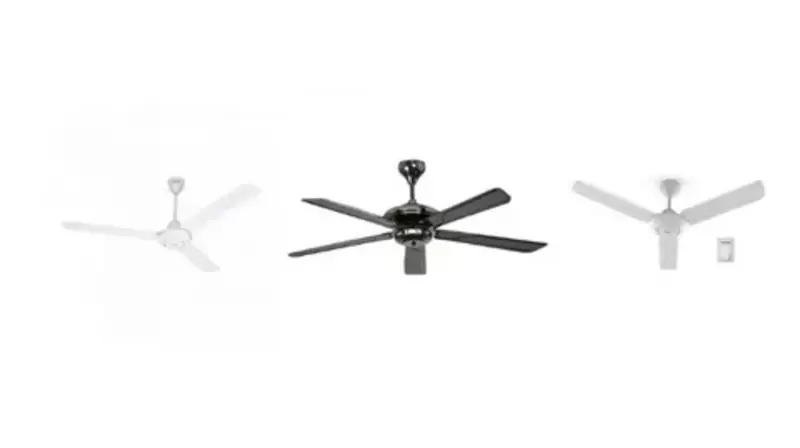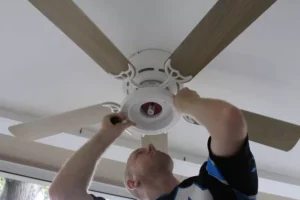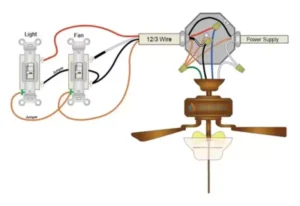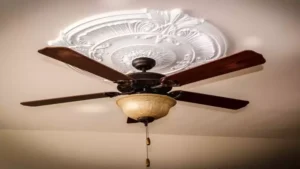What is a Good Airflow for a Ceiling Fan?
Introduction
Ceiling fanatics are a popular desire for cooling and air stream in homes and workplaces. while selecting a ceiling fan, it’s crucial to recall the airflow it can provide. In this newsletter, we can discover what constitutes an excellent airflow for a ceiling fan, which include the principles of CFM (Cubic toes in keeping with Minute) and air pace. we can additionally talk the factors that make contributions to airflow and offer tips on increasing ceiling fan airflow.
Understanding CFM and Air Velocity
CFM: Cubic Feet per Minute
CFM is a degree of the extent of air that a fan can pass in a single minute. It shows how tons air the fan can flow into and is an important aspect in figuring out the fan’s cooling effectiveness. The higher the CFM, the greater effective the fan .
Air Velocity
Air speed refers to the speed at which the air actions. it is measured in miles in keeping with hour (mph) and shows how fast you’ll sense the cooling effect of the fan. better air pace approach a stronger breeze and quicker cooling .
Factors Affecting Ceiling Fan Airflow
Several elements contribute to the airflow of a ceiling fan. expertise these elements permit you to pick a fan that offers top-rated airflow on your area.
-
Fan Blade Shape and Pitch
The form and pitch of the fan blades play a essential function in airflow. Aerodynamic blade designs, consisting of contoured or precision blades, can push air more efficaciously as compared to traditional flat blades. these designs create a extra uniform and easy drift of cooling air .
-
Ceiling Fan Size
The size of the ceiling fan is an essential consideration for airflow. putting in a fan that is too small for your area might not circulate air effectively, even as a fan this is too large might also overpower the room. it is crucial to choose the right size fan for your space to make certain most appropriate airflow .
-
Ceiling Fan Motor Performance
The motor of a ceiling fan is chargeable for producing the movement that creates airflow. A powerful motor is necessary to make sure green airflow. search for fans with optimized automobiles that provide better airflow whilst eating much less electricity .
-
Fan Distance from Ceiling and Floor
The distance between the fan and the ceiling, in addition to the ground, can effect airflow. The proper installation of the fan, along with the right mount kind and downrod duration, ensures best airflow and overall performance .
-
Ceiling Fan Direction
The course wherein the ceiling fan rotates also impacts airflow. for the duration of the summer season, the fan must spin counterclockwise to create a downdraft, which produces a groovy breeze. inside the iciness, the fan have to spin clockwise at a low speed to help distribute warm air trapped on the ceiling .
What is a Good Airflow for a Ceiling Fan?
An excellent airflow for a ceiling fan is one which efficiently circulates air and presents a great cooling effect. while CFM is an important degree of airflow, it is not the only element to bear in mind. Air speed, which determines how speedy you sense the cooling impact, is similarly vital. A ceiling fan with a excessive CFM and sturdy air speed will provide a better cooling enjoy .
Increasing Ceiling Fan Airflow
To maximise the airflow of your ceiling fan, do not forget the following tips:
1. ensure the fan blades are smooth and unfastened from dust, as buildup can reduce airflow.
2. Use an appropriate ceiling fan size for your area.
3. opt for ceiling fanatics with optimized vehicles for higher airflow efficiency.
4. install the fan on the right distance from the ceiling and floor.
5. adjust the fan course according to the season for most desirable airflow .
by means of following those suggestions, you may decorate the airflow of your ceiling fan and revel in a extra comfy surroundings.
Conclusion
A great airflow for a ceiling fan is achieved when it effectively circulates air and presents a significant cooling impact. factors inclusive of CFM, air speed, fan blade form and pitch, fan size, motor performance, and fan path all contribute to the airflow of a ceiling fan. by thinking about these elements and imposing suggestions to boom airflow, you can choose a ceiling fan that meets your cooling needs.













